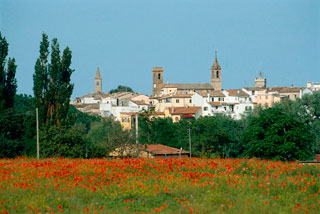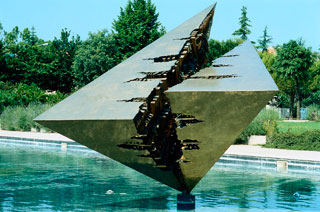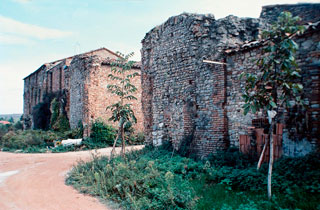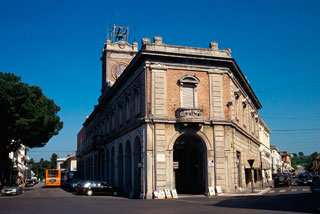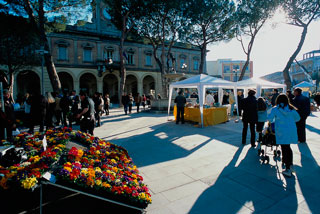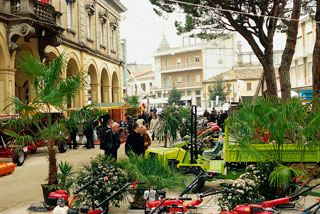Morciano is a modern town situated at a crossroads between the hills and the plains. It was first settled in Roman times, evidence of which are various villas and farmsteads, and records of a Gens Murcia from which the town took its name; but it was never fully developed until the late Middle Ages. The feud of Morciano was donated by the feudatory Pietro Bennone to San Pier Damiani who, in 1069, founded the Abbazia di San Gregorio (Abbey of St Gregory). The monastery, as well as serving a spiritual function, represented one of the most important centres for the production and milling of grain thanks to the mills along the course of the River Conca. The nearby Montefiore Conca controlled for centuries the flourishing commercial activities of Morciano. The most famous market at Morciano is, without doubt, the age-old Fiera di San Gregorio (Festival of St Gregory) which was held at the Abbey in the 13th century and then taken to the streets of the town in the 19th century. This was the most important fair for cattle farmers in the district and an updated version of it continues to be celebrated on the 12th of March.
Morciano was declared independent with a papal decree by Pius IX only in 1857; the grounds for its independence were the milling activity of its five mills, a few of which remain in use like Mulino Rossi in the area of Santa Maria Maddalena, and the trade of its pasta shops (a historic one is Pastificio Ghici, now merged with CON.SV.AGRI), which made it the main centre of commerce and services in the valley. Little remains of the historical centre and even of the Abbazia di San Gregorio (Abbey of St Gregory) which was destroyed during the Napoleonic era. The town was urbanised in the early 20th century and features broad, criss-crossing streets and various buildings in the Liberty style. In the handsome piazza named after the famous painter and sculptor Umberto Boccioni, who led the Futurist movement that originated in Morciano, is a remarkable sculpture of another renowned Italian artist, Arnaldo Pomodoro, also from Morciano. A short distance away is Piazza del Popolo, the main square of Morciano, at the centre of which stands a beautiful fountain representing Mercury on a cup supported by a pedestal with four lions; overlooking this is the Palazzo Municipale with its neoclassical Liberty-style façade featuring beautiful balconies and volutes, and, at the top, an elegant clock tower. Not far from this square are also the Cappella della Beata Vergine (The Chapel of the Blessed Virgin), an octagonal chapel dating back to the 12th century, and the Chiesa parrocchiale di San Michele Arcangelo (The Parish Church of St Michael the Archangel).
Show on map Take me there



